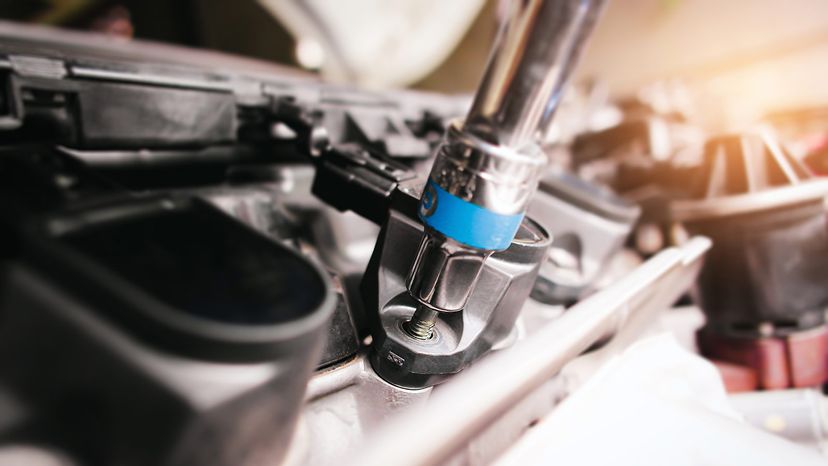How To Test Ignition Coil?
Welcome to our comprehensive guide on understanding and testing ignition coils. Ignition coils are integral components within the ignition system of internal combustion engines, responsible for converting low voltage electrical power into the high voltage required to generate sparks at the spark plugs. In this guide, we'll explore the structure, function, and importance of ignition coils, as well as provide detailed instructions on how to test them effectively.

Understanding Ignition Coils
What is an Ignition Coil?
An ignition coil is a crucial component within the ignition system of internal combustion engines. It serves the primary function of transforming low voltage electrical power from the battery into the high voltage required to generate sparks at the spark plugs.
Components and Structure of Ignition Coils
Ignition coils typically consist of primary and secondary windings, a core, and terminals for electrical connections. The construction and arrangement of these components play a vital role in the coil's ability to generate and transfer high voltage energy effectively.
Role of Ignition Coils in the Ignition System
Within the ignition system, ignition coils function as the primary source of high voltage energy necessary to ignite the air-fuel mixture in the combustion chambers. Their efficient operation is critical for initiating combustion and sustaining engine performance.
Common Symptoms of Ignition Coil Failure
Recognizing the signs of a faulty ignition coil is essential for prompt diagnosis and repair. Common symptoms of ignition coil failure include:
- Engine misfires
- Rough idling or stalling
- Decreased fuel efficiency
- Illumination of the check engine light
- Difficulty starting the engine
Importance of Timely Detection and Replacement
Failure to address ignition coil issues promptly can lead to further damage to engine components, decreased fuel efficiency, and compromised vehicle performance. Regular inspection and testing of ignition coils are critical for maintaining the health and longevity of your vehicle's ignition system.
Tools and Equipment Needed
Before proceeding with ignition coil testing, gather the following tools and equipment:
- Multimeter
- Spark tester
- Continuity tester
- Safety gloves and goggles
- Service manual or repair guide for your vehicle
Safety Precautions to Follow
Ensure your safety by following these precautions:
- Take off the car's battery to avoid an electric shock.
- Put on the proper safety equipment, such as goggles and gloves, before handling ignition components.
- For precise testing techniques, consult the safety recommendations and instructions provided by the manufacturer.

Resistance Testing
- Resistance testing is a straightforward method for assessing the integrity of ignition coils. Follow these steps to perform resistance testing:
- Cut the ignition coil's connection to the electrical system.
- Select the resistance (ohms) setting on your multimeter.
- Check the resistance between the ignition coil's primary and secondary windings.
- Refer to the requirements listed in the service handbook that came with your car to compare the measured resistance values.
Spark Testing
Spark testing allows for the visual inspection of spark quality and strength. Here's how to conduct spark testing:
- Connect a spark tester to the ignition coil output.
- Crank the engine and observe the spark produced by the spark tester.
- Assess the quality and intensity of the spark to determine ignition coil performance.
Continuity Testing
Continuity testing verifies the presence of an uninterrupted electrical path within the ignition coil. Follow these steps to perform continuity testing:
- Unplug the ignition coil from the electrical apparatus.
- To measure continuity (ohms), set your multimeter to that setting.
- Put the multimeter probes on the ignition coil's proper connections.
- Check the primary and secondary windings for continuity.
Oscilloscope Testing
Oscilloscope testing provides detailed insights into ignition coil performance. Follow these steps to conduct oscilloscope testing:
- Connect an oscilloscope to the ignition coil output.
- Crank the engine and observe the waveform displayed on the oscilloscope.
- Analyze the waveform patterns to assess ignition coil functionality.

Bench Testing
Bench testing allows for comprehensive evaluation of ignition coil performance in a controlled environment. Follow these steps to perform bench testing:
- Take off the vehicle's ignition coil.
- Attach the ignition coil to an ignition coil tester or bench tester.
- To carry out the testing method, according to the manufacturer's instructions.
- Analyze the test findings to ascertain the ignition coil's state.
Identifying Issues Based on Test Results
After performing ignition coil tests, analyze the results to identify potential issues or abnormalities. Common problems encountered during testing include:
- Abnormal resistance readings
- weak or inconsistent spark output
- Lack of continuity in the windings
Common Problems Encountered during Testing
If you encounter issues during testing, consider the following troubleshooting steps:
- Verify proper connections and wiring integrity.
- Inspect the ignition coil for physical damage or corrosion.
- Consult the vehicle's service manual for troubleshooting guidance.
Next Steps after Determining Ignition Coil Status
- Based on the test results obtained, take appropriate action to address any identified issues.
- Replace faulty ignition coils with new or rebuilt units.
- Perform additional diagnostic tests as needed to verify system integrity.
- Reassemble components and conduct a test drive to ensure proper operation.
Why is it important to test ignition coils?
Regular testing helps detect potential issues early, preventing costly repairs and ensuring optimal engine performance.
What are the common signs of a faulty ignition coil?
Symptoms include engine misfires, rough idling, decreased fuel efficiency, and difficulty starting the engine.
What tools are needed for ignition coil testing?
Essential tools include a multimeter, spark tester, and continuity tester, along with safety gear such as gloves and goggles.

In essence, understanding how to test ignition coils is essential to preserving a vehicle's maximum performance and dependability. If you follow the instructions in this book and use the appropriate diagnostic tools to find and fix ignition coil problems, your car's ignition system should function smoothly and survive for a long time. Safety should always come first. Consult the service manual that comes with your vehicle for comprehensive testing guidelines and requirements. By being careful and attentive to details, you can extend the engine life of your car. You will be able to maintain optimal vehicle performance, accurately diagnose potential issues, and test ignition coils with the knowledge and skills this comprehensive guide provides.
Click on the following link to read another blog post: Discover Dielectric Grease: A Must-Have In Your Garage













